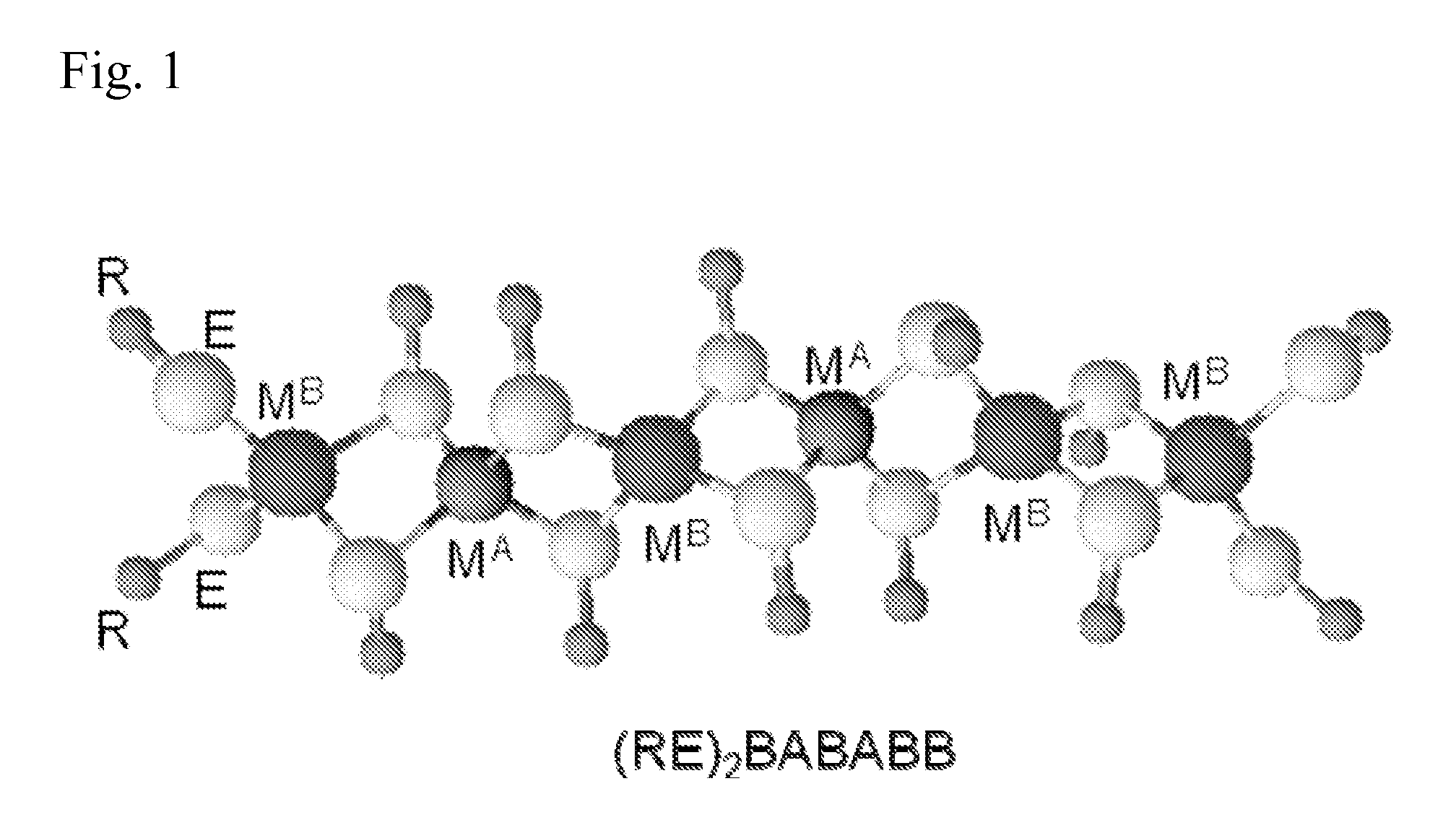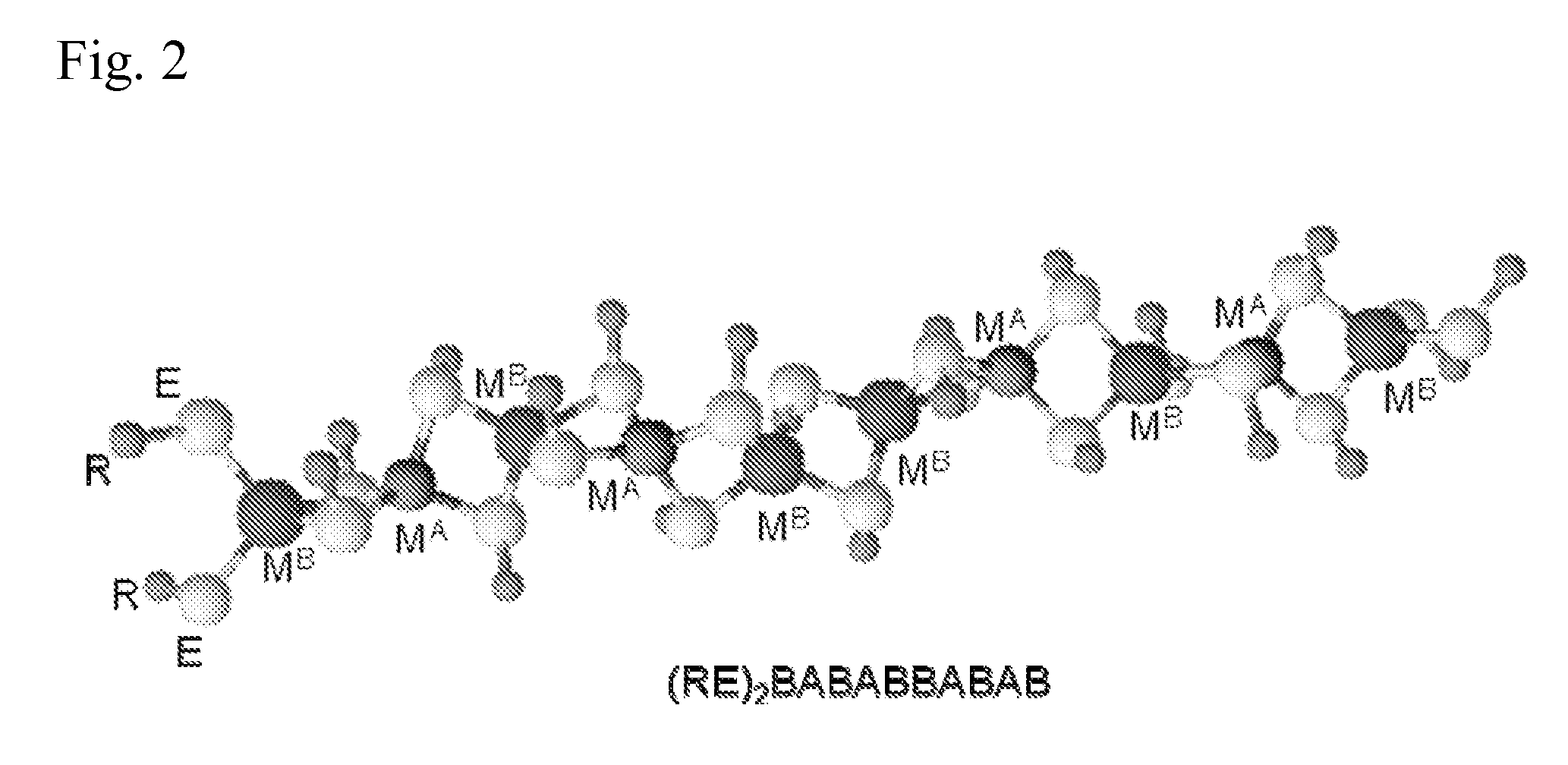Methods for photovoltaic absorbers with controlled group 11 stoichiometry
a photovoltaic absorber and group 11 technology, applied in the direction of sustainable manufacturing/processing, camera filters, instruments, etc., can solve the problems of limited light conversion efficiency, limited ability to control product properties through process parameters, and limited use of optoelectronic or solar cell products in general. to achieve the effect of improving processability of solar cell production
- Summary
- Abstract
- Description
- Claims
- Application Information
AI Technical Summary
Benefits of technology
Problems solved by technology
Method used
Image
Examples
example 1
Controlling the Stoichiometry of Polymeric Precursors
[0515]FIG. 8 shows results of methods for preparing polymeric precursor embodiments (MPP) of this invention having predetermined stoichiometry which are useful for preparing CIS and CIGS materials of the same predetermined stoichiometry. The x-axis of FIG. 8 refers to the weight percent of a particular atom, either Cu, In or Ga, in the monomer compounds used to prepare the polymeric precursor. The y-axis refers to the weight percent of a particular atom in the synthesized polymeric precursor compounds. Atom concentrations were determined by the use of ICP. The linear correlation observed in FIG. 8 for several different polymeric precursor compounds showed that the stoichiometries of the polymeric precursors were precisely controlled by the quantities and compositions of the monomers used to make the polymeric precursors. The linear correlation observed in FIG. 8 also showed that methods of this disclosure can be used to make precu...
example 2
[0516]FIG. 9 shows results of methods for preparing polymeric precursor embodiments (MPP) of this invention having predetermined stoichiometry which are useful for preparing AIS, AIGS, CAIS, and CAIGS materials of the same predetermined stoichiometry. The x-axis of FIG. 9 refers to the weight percent of atoms of a particular kind, either In or Ga, in the monomer compounds used to prepare the polymeric precursor. The y-axis refers to the weight percent of atoms of a particular kind in the synthesized polymeric precursor compounds. Atom concentrations were determined by the use of ICP. The linear correlation observed in FIG. 9 for several different polymeric precursor compounds showed that the stoichiometries of the polymeric precursors were precisely controlled by the quantities and compositions of the monomers used to make the polymeric precursors. The linear correlation observed in FIG. 9 also showed that methods of this disclosure can be used to make precursor compounds having a r...
example 3
Controlling the Stoichiometry of Bulk, Crystalline CIGS Materials Using Polymeric Precursors
[0517]FIG. 10 shows results of methods for controlling the stoichiometry of the composition of a bulk, crystalline CIGS material. In these results, the ratio of indium to gallium was controlled. FIG. 10 shows an analysis by X-ray diffraction of the structure of the crystalline phase of bulk CIGS materials made with various polymeric precursors. The ratio of indium to gallium in the crystals of CIGS materials was detected by the relative positions of the 2-theta-(112) peaks in the X-ray diffraction patterns. As shown in FIG. 10, a linear correlation was found between the percent indium in the bulk CIGS materials and the positions of the 2-theta-(112) peaks over a range of percent indium from about 30% to about 90%, corresponding to a ratio of indium to gallium in the bulk CIGS materials of 30:70 to 90:10, respectively. The CIGS materials were each made from a polymeric precursor having a perce...
PUM
| Property | Measurement | Unit |
|---|---|---|
| thickness | aaaaa | aaaaa |
| temperature | aaaaa | aaaaa |
| temperature | aaaaa | aaaaa |
Abstract
Description
Claims
Application Information
 Login to View More
Login to View More - R&D
- Intellectual Property
- Life Sciences
- Materials
- Tech Scout
- Unparalleled Data Quality
- Higher Quality Content
- 60% Fewer Hallucinations
Browse by: Latest US Patents, China's latest patents, Technical Efficacy Thesaurus, Application Domain, Technology Topic, Popular Technical Reports.
© 2025 PatSnap. All rights reserved.Legal|Privacy policy|Modern Slavery Act Transparency Statement|Sitemap|About US| Contact US: help@patsnap.com



